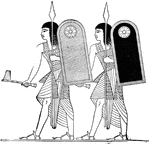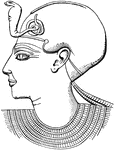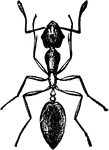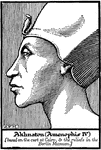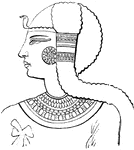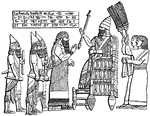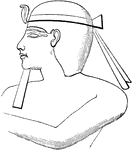Search for "pharaoh"
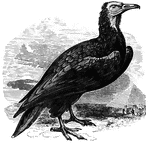
Egyptian Vulture
N. percnopterus, common to Africa, sometimes found in Southern Europe and in Asia. Males and…

Ramses II in Profile
"Ramses II was a powerful sovereign, called Sesostris by the Greeks, identified by many with the Pharaoh…

Egyptian Bellows
"Among the remarkable inventions of a remote era, may be mentioned bellows and siphons. The former were…
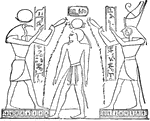
Ramses III
The second Pharaoh of the Twentieth Dynasty and is considered to be the last great New Kingdom king…
Ramses II
An Egyptian pharaoh of the nineteenth dynasty. He was born ca. 1302 BC and reigned from either 1279…

Ramses
The founding Pharaoh of Ancient Egypt's 19th dynasty. The dates for his short reign are unclear, but…

Plan of the Ramasseum
The Ramesseum is the memorial temple (or mortuary temple) of Pharaoh Ramesses II. Labels in this diagram:…

Hieroglyphic Panel
An illustration of an Egyptian hieroglyphic panel with a cartouche. In Egyptian hieroglyphs, a cartouche…
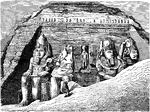
Entrance of the Great Temple at Abu Simbel
Four colossal 20 meter statues of the pharaoh with the double crown of Upper and Lower Egypt decorate…

Egyptian Amphora Shape
This Egyptian amphora is a vase with a cover intended for water, oil or wine. It was found in Thebes,…

The Egyptian King Taking the Wife of Abram
"The princes also of Pharaoh saw her, and commended her before Pharaoh: and the woman was taken into…
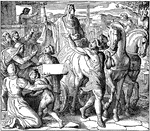
Joseph Proclaimed Ruler of Egypt
"And he made him to ride in the second chariot which he had; and they cried before him, Bow the knee:…

The Sons of Jacob Burying Their Father
"And Joseph went up to bury his father: and with him went up all the servants of Pharaoh, the elders…
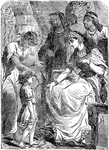
Moses Brought Before Pharaoh's Daughter
"And the child grew, and she brought him unto Pharaoh's daughter, and he became her son. And she called…
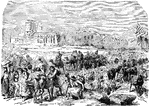
Departure of the Israelites from Egypt
"And it came to pass, when Pharaoh had let the people go, that God led them not through the way of the…
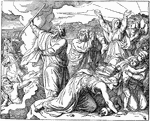
Pharaoh's Host Destroyed
"And Moses stretched out his hand over the sea; and Jehovah caused the sea to go back by a strong east…

The Sphinx of Ramses II
The Sphinx of Ramses II is a 3,300 year old Egyptian monument. Ramses II was the third Pharaoh of the…
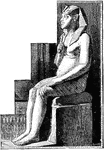
Statue of Amenophis IV
Also known as Akhenaten. Ruled as pharaoh of the Eighteenth Egyptian dynasty for 17 years.

Ramses the Great
Also known as Ramses II. A profile portrait of Ramses the Great with carvings behind his head. He is…
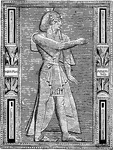
Menepta
Also known as Merneptah. He ruled Egypt as pharaoh for ten years, and was the thirteenth son of Ramessess…

Khufu
A Pharaoh of Ancient Egypt. He reigned from 2589 to 2566 BC, and is known for being the builder of the…

Merneptah
The fourth ruler of the Nineteenth Dynasty of Ancient Egypt, reigning from 1213 to 1203 BC.
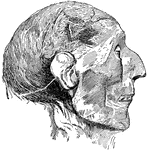
Head of Mummy of Ramses II
"The mummy was discovered in 1881, in an underground chamber near the site of Thebes. With it were the…

Rock Temple at Abu-Simbel
"The temple, built by Ramses II on the steep face of a cliff overlooking the Nile, has a facade containing…

The Finding of Moses
"And there went a man of the house of Levi, and took to wife a daughter of Levi. And the woman conceived,…

Joseph in Prison with the Cup-Bearer and the Chief Baker
"And Pharaoh was wroth against his two officers, against the chief of the butlers, and against the chief…
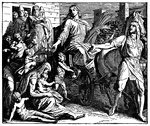
Joseph Collects Wheat as Governor of Egypt in Preparation for the Famine
"48 And he gathered up all the food of the seven years which were in the land of Egypt, and laid up…

Moses is Found by Pharaoh's Daughter as Miriam Watches
"And when she could not longer hide him, she took for him an ark of bulrushes, and daubed it with slime…
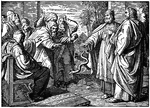
Aaron's Rod Turning into a Serpent Before Pharaoh and His Magicians
"And Moses and Aaron went in unto Pharaoh, and they did so, as Jehovah had commanded: and Aaron cast…
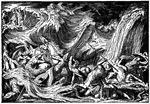
The Red Sea Swallows Pharaoh and His Army
"And Moses stretched forth his hand over the sea, and the sea returned to its strength when the morning…

